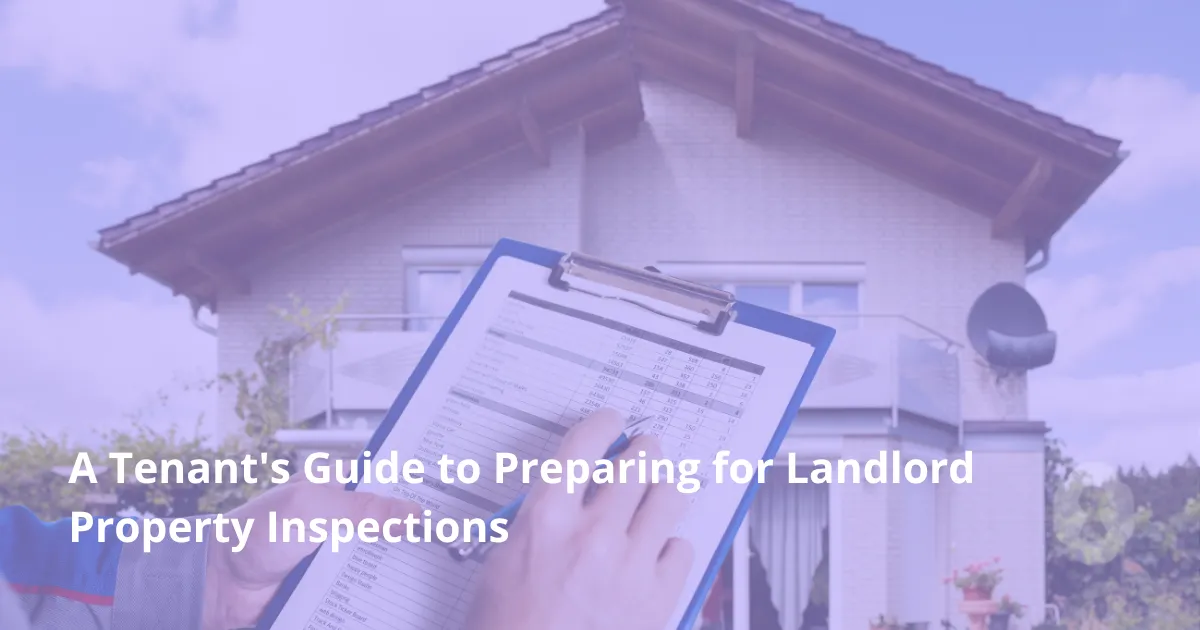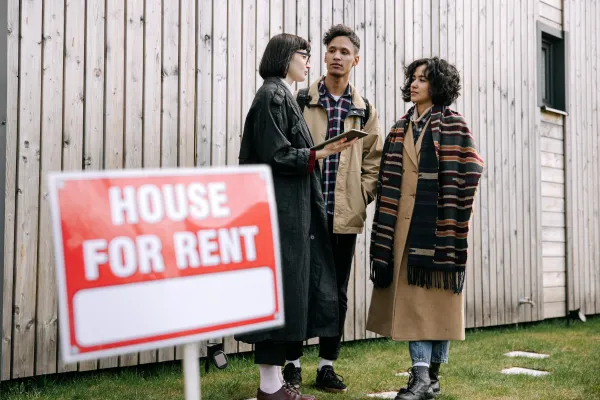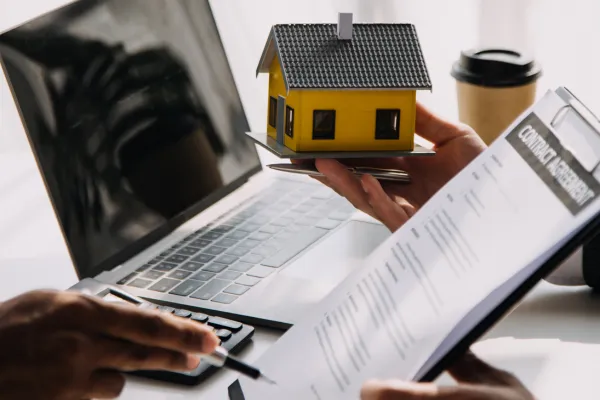
Did you know many renters struggle during rental inspections because they're not ready?
A rental inspection is when landlords or property managers check the property's condition. This includes wear and tear, repairs, and how clean it is. Being ready can really help.

As a renter, knowing about a rental inspection checklist is key. It helps you stay organized and meet your lease agreement duties. For a detailed guide, check out this apartment inspection checklist to start.
"The most successful rental relationships aren't built on perfect properties—they're built on perfect transparency. Inspections shouldn't be viewed as intrusions or evaluations, but rather as collaborative check-ins that protect both the tenant's living experience and the owner's investment. When approached with clear communication and shared documentation, these routine visits transform from potential friction points into opportunities to demonstrate mutual respect. In today's rental landscape, the properties that retain tenants longest aren't necessarily the most luxurious—they're the ones where residents feel their concerns are documented, addressed, and valued as part of an ongoing conversation about home."
Taylor Wilson, CEO of Rent with Clara
Understanding what happens during landlord inspections helps you maintain a positive landlord-tenant relationship and avoid surprises. These checks are standard practice in property management and give both parties peace of mind about the rental's condition.
Landlords may perform different types of inspections during your stay. Move-in and move-out inspections are the most common, documenting the condition of the property when a tenant moves in and out.
Many landlords also conduct routine inspections at least once a year or quarterly inspections every 6 months to spot maintenance issues early. Some property management company representatives perform drive-by checks to verify exterior upkeep.
Each type serves a different purpose, but all help assess the condition and ensure the space is properly maintained throughout your tenancy.
Tenants have a right to proper notice before any regular inspection—typically 24 to 48 hours depending on state laws in your area. Your right to privacy is protected, and landlords cannot enter without the tenant present except in genuine emergencies.
The specific clause regarding rental entry should be clearly outlined in the lease agreement, so review your contract to understand the exact requirements in every state where you rent.

During inspections, landlords look for signs of damage beyond normal wear and tear, checking anything that needs repair or doesn't work properly. They'll verify you're following lease terms and inspect common areas, heating and cooling systems, windows and doors, and safety equipment.
Documenting issues that existed before you moved in protects you from having landlords deduct from the security deposit for pre-existing problems when you leave.
Knowing these things can help you prepare. It might even prevent legal issues related to your tenancy.
Using a comprehensive property inspection checklist helps you prepare systematically and ensures nothing gets overlooked. Having a reliable template or checklist for landlords to follow makes the process transparent for everyone involved.
Focus on thorough cleaning throughout the rental, paying special attention to kitchens and bathrooms where grime accumulates quickly. Vacuum or sweep floors, wipe down surfaces, and remove clutter from all living spaces.
Remember that the tenant is responsible for basic upkeep, and a clean space demonstrates you're taking care of the property. Check common areas like hallways or shared spaces if applicable, ensuring they're presentable as well.
For more detailed guidance, you can refer to resources like this rental inspection checklist.
Safety equipment must be functional to comply with regulations—test smoke detectors, carbon monoxide alarms, and check that fire extinguishers haven't expired. Verify that heating and cooling systems work correctly and that electrical outlets function safely.
Items that pose a fire hazard, like overloaded power strips or blocked exits, should be addressed immediately. Landlords document these items in their inspection report, and non-compliance could lead to legal action in severe cases.
Key items include:

Creating detailed records protects both you and your landlord from disputes. Photograph or note the condition of walls, floors, appliances, and fixtures using a property inspection checklist for landlords or renter documentation form.
This inspection report becomes crucial evidence when determining what damage occurred during your tenancy versus what existed beforehand. Smart renters keep their own checklist as well to cross-reference against the landlord's findings during any necessary inspection.
Consider the following:
"Accurate documentation of the property's condition at the start and end of the tenancy can prevent potential disputes over damages."
Key areas to document include:
By following this detailed checklist, renters can be well-prepared for their landlord's inspection. This helps maintain a positive rental experience.
Breaking down your preparation by room makes the process manageable and ensures you don't miss critical areas. This systematic approach helps you manage your properties (or in your case, your rental responsibilities) more effectively.
Clean all appliances thoroughly—the refrigerator, oven, microwave, and dishwasher should be spotless inside and out. Wipe down countertops, cabinet exteriors, and ensure the sink drains properly without leaks.
Landlords look at during a rental inspection whether appliances work properly and if there's grease buildup or food residue. A clean kitchen shows you're maintaining the space well, which can be important if you're hoping for a new tenant recommendation or want to avoid deposit deductions.
Scrub toilets, sinks, showers, and tubs until they shine, paying attention to grout and caulking that can harbor mold. Check under sinks for leaks and verify that all fixtures function correctly—running toilets or dripping faucets should be reported.
Look for signs of water damage on ceilings or walls, as moisture problems can escalate quickly. Your landlord will assess the condition of these high-use areas carefully since water damage is expensive to repair.
Vacuum carpets and mop hard floors, dust all surfaces, and ensure furniture isn't causing damage to walls or floors. Remove personal clutter to give inspectors a clear view of the space's actual condition.
Check windows and doors to confirm they open, close, and lock properly—security features matter during inspections. Any marks on walls or damaged fixtures should either be repaired or documented so they're not classified as damage you caused.
Sweep patios, balconies, or porches and remove any accumulated debris or personal items. Check that outdoor furniture hasn't damaged surfaces and that railings are secure.
Landlords want to see that outdoor areas remain safe and presentable, as they're part of the overall property condition. If your lease includes yard maintenance responsibilities, ensure lawns are mowed and gardens are tidy before the inspection.
Using a rental inspection form can help you document the condition of your rental property and ensure that you're meeting your responsibilities as a tenant.
Proactively handling potential problems before the inspection prevents complications and demonstrates responsible tenancy. Taking this approach shows you're serious about meeting the expectations outlined in the lease.
Walk through your rental specifically looking for anything that needs repair—leaky faucets, flickering lights, or stuck windows. Report these issues to your landlord immediately since you're not responsible for fixing structural or mechanical problems that were working when you moved in.
Keep records of your maintenance requests in case disputes arise later about who knew about problems and when. This documentation protects you from being held accountable for deterioration that occurred despite your good-faith efforts to report issues.
Telling your landlord about these issues quickly shows you're responsible. It also helps keep the property in good shape.
Pest problems reflect poorly during inspections, even though infestations aren't always the tenant's fault. Keep food sealed, take trash out regularly, and don't leave dishes sitting overnight to minimize attraction.
If you look for signs of cockroaches, rodents, or bed bugs and find evidence, notify your landlord immediately—pest control is typically their responsibility. Acting quickly prevents a minor issue from becoming a major infestation that could affect your security deposit.
If you see pest signs, tell your landlord right away. They must arrange for pest control to keep the property up to standard.
Installing shelves, painting walls, or making other changes without permission violates most lease agreements. If you've made unauthorized modifications, either remove them carefully or ask your landlord for retroactive approval before the inspection.
Be honest about any changes—trying to hide them typically backfires when discovered. Most landlords appreciate tenants who communicate openly and work to resolve issues rather than covering them up.
Address problems systematically: fix what you can, report what needs professional attention, and document everything. If your landlord notes concerns during the inspection, respond promptly with your action plan.
Remember that routine inspections benefit you too by catching problems early before they become expensive emergencies. Maintaining open communication and acting responsibly typically leads to positive outcomes and stronger landlord relationships over time.
By tackling these issues, you can make sure your rental is in order. This also shows you're following your lease agreement.
Being ready for a landlord's inspection is key for a good relationship between landlords and tenants. A detailed rental inspection checklist helps you follow your lease and keep the property in shape.
Regular inspection benefits both sides by identifying problems early—whether maintenance issues or pests—and addressing them before they worsen. As a tenant, being prepared gives you peace of mind and can prevent arguments that might otherwise arise over property conditions.
Following the tips in this article and using a comprehensive property inspection checklist makes inspections go smoothly. It keeps your place in good condition and demonstrates you're taking your lease responsibilities seriously.
A successful inspection is a collaborative effort between the landlord and tenant, and being prepared helps ensure your home remains safe and comfortable.